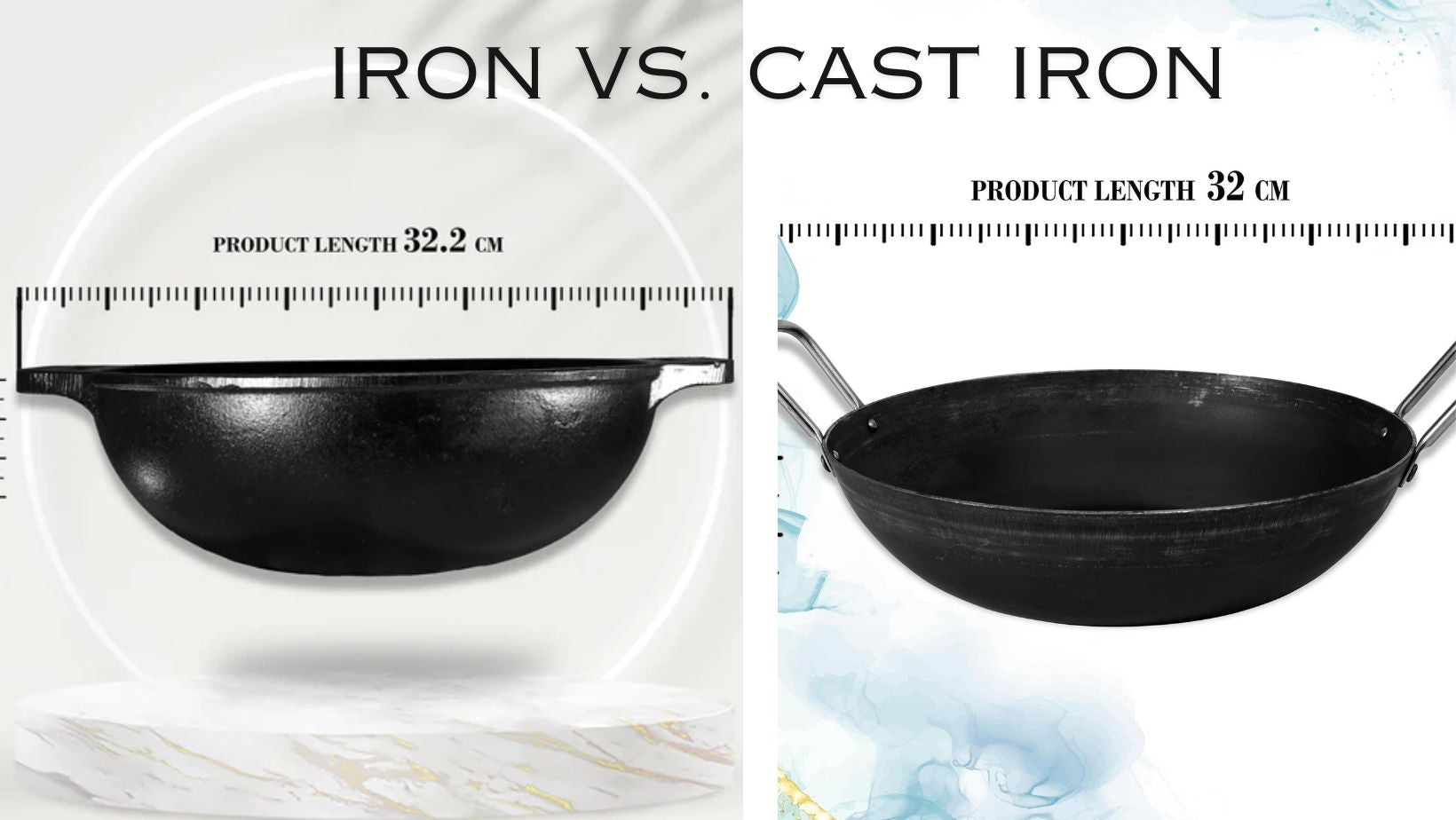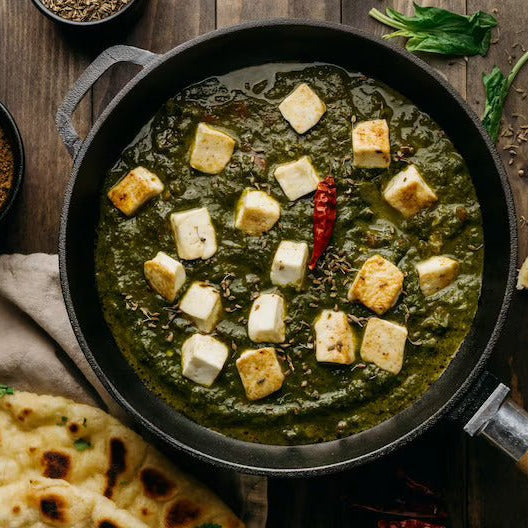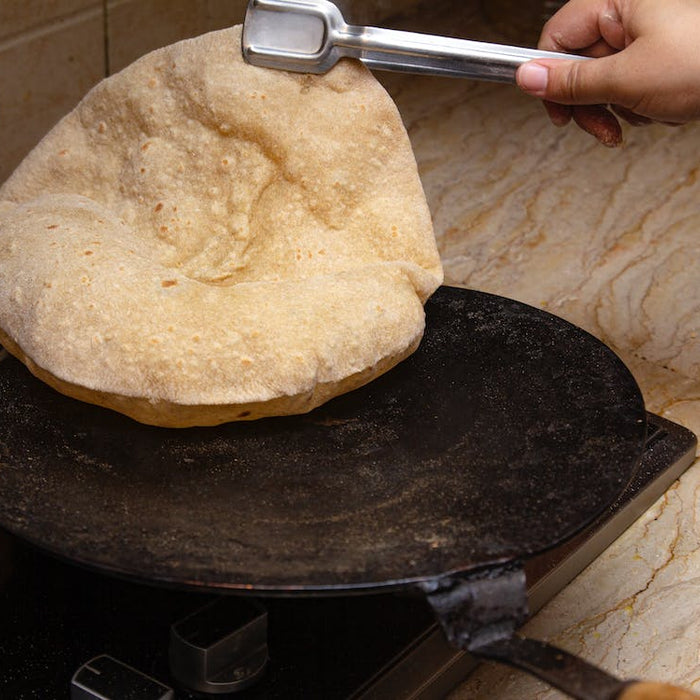
Iron vs. Cast Iron Kitchenware - Differences, Benefits, and Uses
In the realm of kitchenware, two materials often steal the spotlight: regular iron and its more robust counterpart, cast iron. While both share a common origin, understanding their differences, benefits, and uses can significantly impact your culinary journey. Let's delve into the fascinating world of iron and cast iron, exploring their unique qualities and the important facts you need to know.
Regular Iron: The Basics
Composition and Properties: Regular iron, commonly referred to as just "iron," is a chemical element denoted by the symbol Fe on the periodic table. It is a vital component in the Earth's crust and serves various industrial and domestic purposes. In its pure form, iron is soft and malleable, making it unsuitable for certain applications where durability is crucial.
Benefits and Uses:
- Dietary Essential: Iron is a vital nutrient for the human body, contributing to the production of red blood cells and ensuring proper oxygen transportation.
- Industrial Applications: Iron is widely used in manufacturing, construction, and engineering due to its strength, ductility, and magnetic properties.
- Cookware: While less common than its cast iron counterpart, regular iron is used in some cookware, often as part of multi-material compositions.
Important Facts about Regular Iron:
- Prone to Rust: Pure iron is susceptible to rust when exposed to moisture and oxygen.
- Limited Cookware Use: Its use in cookware is typically restricted due to its malleability and rusting tendencies.
Cast Iron: The Robust Sibling
Composition and Properties: Cast iron is an alloy derived from iron that includes a higher carbon content, typically between 2% and 4%. This infusion of carbon gives cast iron its signature strength and durability. The manufacturing process involves melting the iron and pouring it into molds, resulting in a versatile and rugged material.
Benefits and Uses:
- Excellent Heat Retention: Cast iron is renowned for its ability to retain and evenly distribute heat, making it ideal for slow-cooking and baking.
- Versatility: From skillets and pans to Dutch ovens and griddles, cast iron cookware comes in various forms, catering to a wide range of culinary needs.
- Longevity: Properly maintained, cast iron cookware can last for generations, becoming cherished family heirlooms.
Important Facts about Cast Iron:
- Seasoning is Key: Cast iron cookware requires seasoning to build a protective layer that prevents rust and enhances its non-stick properties.
- Heavy but Durable: While cast iron can be heavy, its durability and heat retention make it a preferred choice for many chefs.
- Enhances Iron Intake: Cooking in cast iron can contribute to dietary iron intake, especially when preparing acidic or high-moisture foods.
| Characteristic | Regular Iron | Cast Iron |
|---|---|---|
| Composition | Chemical element (Fe) | Iron alloy with higher carbon content (2-4%) |
| Properties | Soft, malleable | Strong, durable |
| Use in Cookware | Limited due to malleability | Versatile, used in various cookware forms (skillets, pans, Dutch ovens) |
| Heat Retention | Not applicable | Excellent heat retention |
| Longevity | Not applicable | Long-lasting, can last for generations with proper maintenance |
| Seasoning Requirement | Not applicable | Requires seasoning to build a protective layer and enhance non-stick properties |
| Weight | Light | Can be heavy, but durable |
| Rust Resistance | Prone to rust when exposed to moisture and oxygen | Requires seasoning to prevent rust, and proper care for rust resistance |
| Applications | Industrial, dietary essential (nutrient) | Widely used in cooking for its durability and heat retention |
This table provides a concise overview of the key differences between regular iron and cast iron, emphasizing their properties, uses, and considerations.
Iron vs. Cast Iron Cookware: Unveiling the Culinary Distinctions
In the heart of every kitchen, the choice of cookware is a pivotal decision that transcends mere utensils; it shapes the very essence of culinary creations. Amidst the myriad options, two stalwarts stand out – regular iron and its robust counterpart, cast iron. Beyond their shared elemental origin lies a tapestry of distinctions that profoundly influences cooking experiences. Join us in this culinary exploration as we navigate the nuances, benefits, and applications that set apart iron from cast iron cookware.
The Elemental Ballet: Regular Iron
At its core, regular iron, a fundamental element denoted by the symbol Fe, sets the stage for many industrial applications and even plays a role in the human diet. In its pure form, iron offers malleability and versatility, making it suitable for a range of uses. While not as commonly associated with cookware, it finds its way into certain culinary creations, often in collaboration with other materials to harness its unique properties.
Benefits and Drawbacks of Regular Iron in Cookware:
While regular iron brings an inherent strength to cookware, its malleability can limit its application in the kitchen. Traditional iron cookware is less prevalent due to its susceptibility to rust when exposed to moisture and air. However, when part of a well-crafted multi-material composition, regular iron can contribute to the overall durability and cooking performance of certain kitchen essentials.
The Iron Gladiator: Cast Iron Cookware
Step into the arena, and cast iron emerges as the gladiator of cookware, fortified with a higher carbon content (usually between 2% and 4%) for unparalleled strength. This alloy undergoes a meticulous casting process, transforming molten iron into enduring kitchen warriors – skillets, pans, Dutch ovens, and more.
Brawn and Brilliance: Benefits and Drawbacks of Cast Iron:
Cast iron's claim to culinary fame rests on its exceptional heat retention and even distribution. This heavyweight champion takes time to heat but, once heated, becomes a consistent source of culinary prowess. Properly seasoned, cast iron develops a non-stick surface that enhances with each use, making it a favorite for searing, baking, and frying. Yet, the weight of cast iron can be considered a drawback for some, requiring a certain level of care and maintenance, including regular seasoning to prevent rust.
Choosing Your Culinary Companion:
In the arena of iron vs. cast iron cookware, the choice depends on the culinary journey you envision. Regular iron, with its elemental charm, finds its place in select kitchen collaborations. In contrast, cast iron, with its robust personality, becomes the culinary companion for those who seek unparalleled heat control and durability. As we embark on this exploration, the kitchen beckons, inviting you to choose your culinary ally wisely, for in the world of cookware, each element brings its own flavor to the pot.
Conclusion: Making the Right Choice
In the battle of iron vs. cast iron, the right choice depends on your specific needs. Regular iron has its place in dietary requirements and certain industrial applications, while cast iron shines in the kitchen, offering unparalleled durability and cooking versatility. Whether you're savoring the health benefits of iron in your diet or crafting culinary masterpieces with cast iron, understanding their unique qualities adds depth to your appreciation of these essential materials.
See below our Bestsellers of Iron Kitchenware 👇
Featured collection
-
Original price - Original priceOriginal price Rs. 19.99Rs. 19.99-Current price Rs. 19.99
Product title
Original price - Original priceOriginal price Rs. 19.99Rs. 19.99-Current price Rs. 19.99 -
Original price - Original priceOriginal price Rs. 19.99Rs. 19.99-Current price Rs. 19.99
Product title
Original price - Original priceOriginal price Rs. 19.99Rs. 19.99-Current price Rs. 19.99 -
Original price - Original priceOriginal price Rs. 19.99Rs. 19.99-Current price Rs. 19.99
Product title
Original price - Original priceOriginal price Rs. 19.99Rs. 19.99-Current price Rs. 19.99 -
Original price - Original priceOriginal price Rs. 19.99Rs. 19.99-Current price Rs. 19.99
Product title
Original price - Original priceOriginal price Rs. 19.99Rs. 19.99-Current price Rs. 19.99 -
Original price - Original priceOriginal price Rs. 19.99Rs. 19.99-Current price Rs. 19.99
Product title
Original price - Original priceOriginal price Rs. 19.99Rs. 19.99-Current price Rs. 19.99
Blog posts
-
-

What is Karahi or Kadahi? Exploring Its Best Use in 2024 | Non Stick
The kadai or karahi holds a special place, when it comes to Indian cooking,choose MACclite kadai cookware for a healthier and more enjoyable cooking experience.Read now -

Best Tawa for Roti 2024 - Guide to Choosing the Best Iron Tawa for Your Family
The roti tawa is the right tool to achieve the ideal texture and taste. Finding the perfect roti tawa for your family can be both rewarding and challenging in 2024 due to the many options available.Read now


